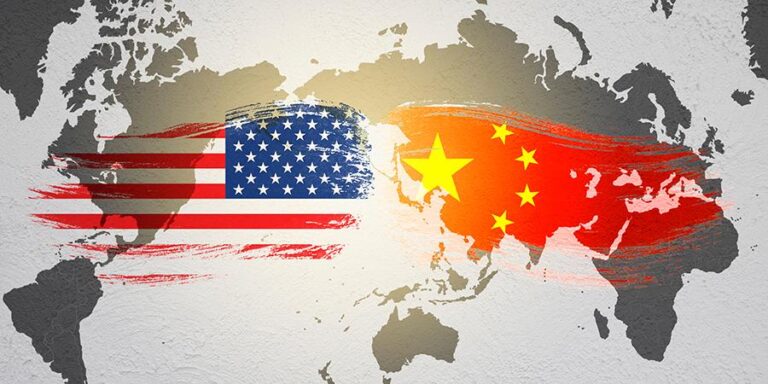As the United States welcomes a new administration, the stakes in its relationship with China have never been higher. In a comprehensive report released by the Asia Society, experts lay out strategic recommendations aimed at reshaping U.S. policy toward Beijing. With economic ties, security concerns, and global influence all entwined, the report calls for a nuanced approach that balances competition with cooperation. This article examines the key proposals from the Asia Society and their potential implications for America’s future engagement in the Asia-Pacific region.
U.S.-China Strategic Competition and Its Global Implications
The intensifying rivalry between the United States and China is reshaping global alliances and economic structures, prompting policymakers worldwide to reassess their strategic orientations. The competition extends beyond traditional military concerns, encompassing technological innovation, supply chain security, and diplomatic influence. As a result, nations are increasingly navigating a complex landscape where aligning with either superpower could have significant consequences for their political and economic futures.
Key considerations for addressing this dynamic rivalry include:
- Strengthening multilateral partnerships: Collaborating with allies to present a unified stance on trade and security issues.
- Enhancing economic resilience: Diversifying supply chains to reduce dependencies vulnerable to geopolitical tensions.
- Promoting technological innovation: Investing in research and development to maintain competitive advantages in critical sectors.
- Engaging in pragmatic diplomacy: Pursuing dialogue to manage conflicts and build understanding amid strategic competition.
| Area | U.S. Approach | Implications |
|---|---|---|
| Technology | Investment in AI and 5G, export controls | Global tech standards and market competition |
| Trade | Tariffs, trade agreements, supply chain diversification | Shifts in global trade flows and production hubs |
| Security | Military presence in Indo-Pacific, alliance strengthening | Regional stability and deterrence dynamics |
| Diplomacy | Strategic dialogues, climate cooperation | Opportunities for conflict mitigation |
Strengthening Economic Engagement While Addressing Security Concerns
Effective economic collaboration between the U.S. and China demands a nuanced approach that balances robust trade relations with vigilant oversight of national security implications. Policymakers should prioritize frameworks that promote transparency and reciprocity, ensuring that American businesses operate on a level playing field while safeguarding sensitive technologies. Enhancing multilateral trade agreements and fostering dialogue on intellectual property protection can consolidate trust, which remains essential for sustained economic engagement. By aligning economic interests with security imperatives, the U.S. can mitigate risks without resorting to broad restrictions that might undermine diplomatic channels.
Key strategies must include:
- Targeted export controls: Focus tightly on specific technologies linked to defense sectors rather than blanket bans.
- Cross-sector intelligence sharing: Facilitate cooperation between economic regulators and national security agencies to identify emerging threats early.
- Investment screening enhancements: Strengthen the Committee on Foreign Investment in the United States (CFIUS) to balance open investment with risk management.
- Support for supply chain resilience: Incentivize diversification away from critical dependencies without severing economic ties.
| Focus Area | U.S. Policy Action | Security Outcome |
|---|---|---|
| Technology Transfer | Implement selective export licenses | Limit dual-use technology leakage |
| Investment | Expand CFIUS review scope | Protect critical infrastructure |
| Trade Compliance | Enforce intellectual property rights | Reduce economic espionage |
| Supply Chains | Promote regional partnerships | Enhance resilience and security |
Enhancing Diplomatic Channels to Manage Tensions and Promote Cooperation
In today’s complex geopolitical landscape, reinvigorating diplomatic engagements stands as an imperative strategy for de-escalating tensions between Washington and Beijing. Establishing consistent, high-level dialogues that emphasize transparency and mutual respect can curtail misunderstandings and build confidence. Furthermore, prioritizing back-channel communications and track-two diplomacy initiatives—such as academic exchanges and think tank collaborations—can open discreet avenues for problem-solving that formal talks may not achieve. These efforts should be designed with flexibility and responsiveness in mind, adapting quickly to emerging challenges and opportunities.
In supporting these diplomatic endeavors, the administration must implement a multifaceted approach that includes:
- Regular bilateral summits: Scheduled meetings to address pressing bilateral issues and align on global challenges.
- Joint crisis management mechanisms: Establishing rapid communication channels to manage incidents at sea, airspace, and cyberspace.
- Multilateral forum engagement: Reinforcing alliances through platforms such as ASEAN, APEC, and the Quad to foster cooperative regional security.
- People-to-people exchanges: Expanding educational and cultural programs to deepen mutual understanding and reduce long-term animosities.
| Diplomatic Channel | Purpose | Expected Outcome |
|---|---|---|
| High-Level Summits | Direct dialogue on strategic concerns | Decreased miscalculations |
| Track-Two Diplomacy | Informal conflict resolution | Innovative solutions |
| Crisis Hotlines | Immediate incident management | Prevention of escalation |
| Multilateral Conferences | Broadened cooperative frameworks | Regional stability |
Promoting Human Rights and Democratic Values in Bilateral Relations
U.S. engagement with China must underscore the primacy of human rights and democratic governance as pillars for a stable international order. To achieve this, a multifaceted approach should be adopted that goes beyond mere rhetoric. Diplomatic efforts ought to emphasize open dialogues on issues such as freedom of expression, rule of law, and protection of minority rights, fostering mutual understanding and accountability. Moreover, this strategy should involve closer collaboration with international organizations and civil society groups that advocate for human rights inside and outside China.
Concrete actions for advancing these objectives include:
- Incorporating human rights benchmarks into bilateral agreements and trade negotiations.
- Support for independent journalism and digital freedom initiatives within China.
- Engagement with Chinese diaspora and human rights defenders to amplify their voice globally.
- Regular public reporting on China’s human rights practices by the U.S. State Department.
| Area of Focus | Recommended U.S. Action | Expected Outcome |
|---|---|---|
| Freedom of Expression | Promote internet freedom and oppose censorship | Greater access to independent information |
| Rule of Law | Encourage legal reforms and judicial transparency | Improved protection of individual rights |
| Minority Rights | Highlight and respond to abuses in international forums | Increased international pressure and awareness |
Key Takeaways
As the new administration takes shape, policymakers face the critical task of redefining U.S. engagement with China amid complex geopolitical challenges. The recommendations outlined by the Asia Society underscore the need for a balanced approach—one that combines strategic competition with diplomatic dialogue and multilateral cooperation. Navigating this pivotal relationship will require careful calibration to protect American interests while managing risks in a rapidly evolving global landscape. How the United States responds in the coming years will not only shape bilateral ties but also influence the broader regional and international order.







